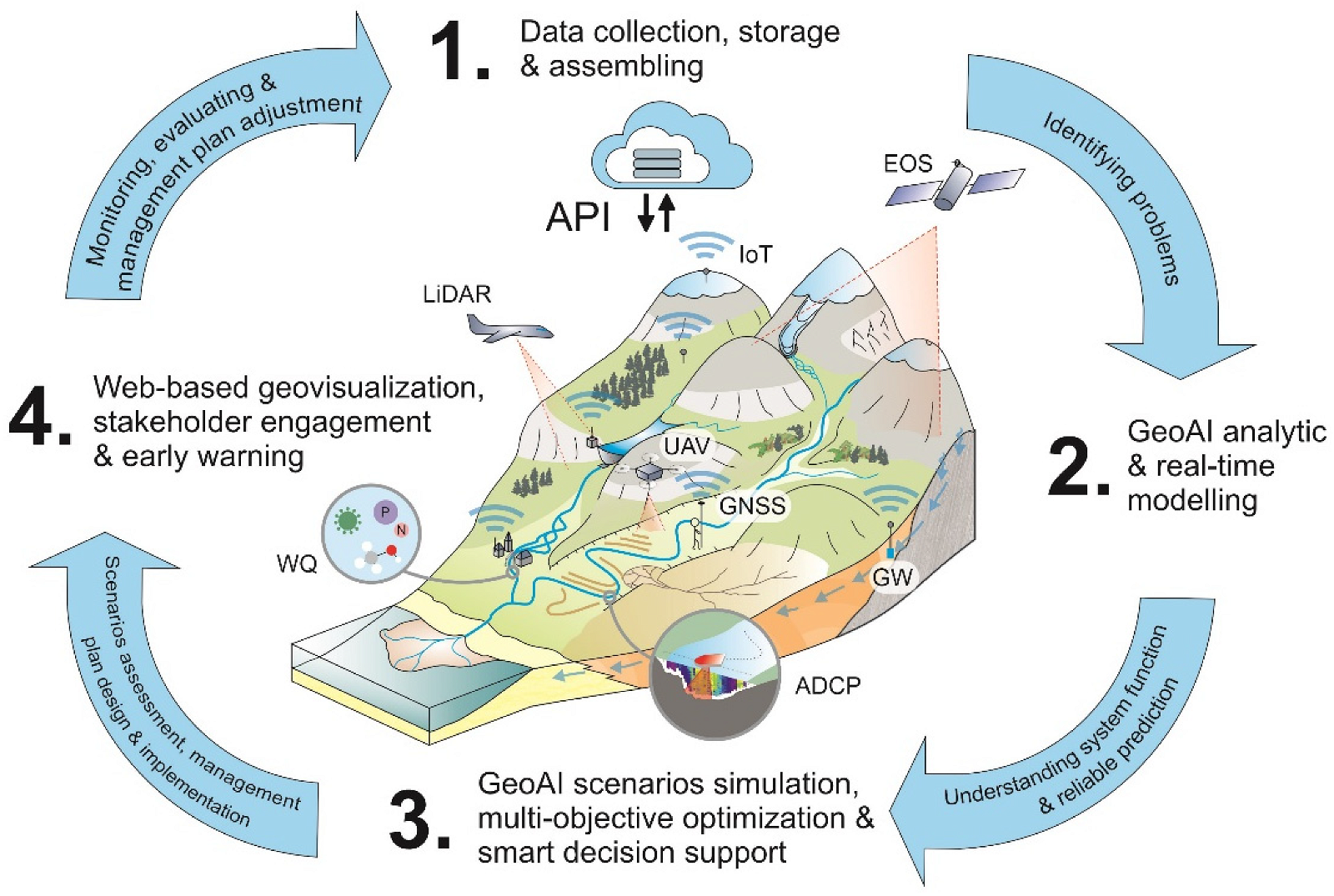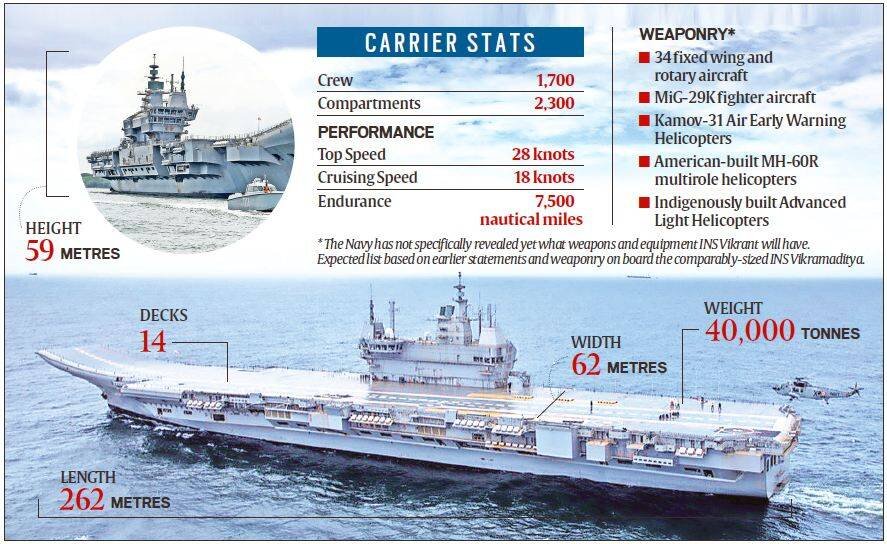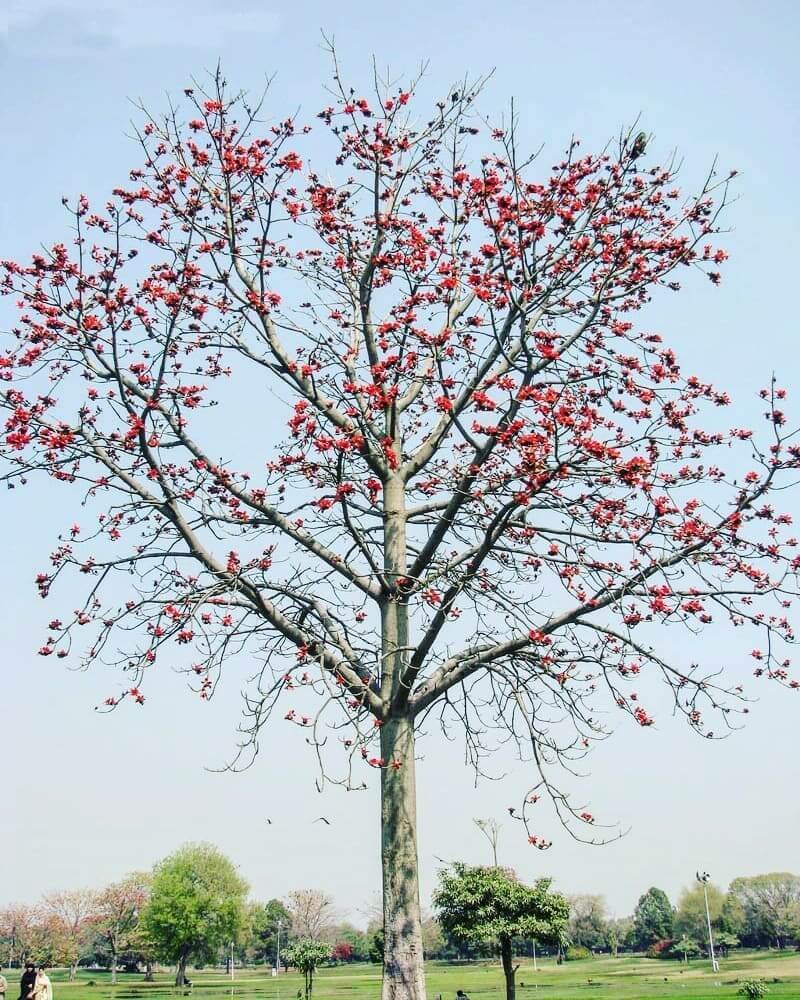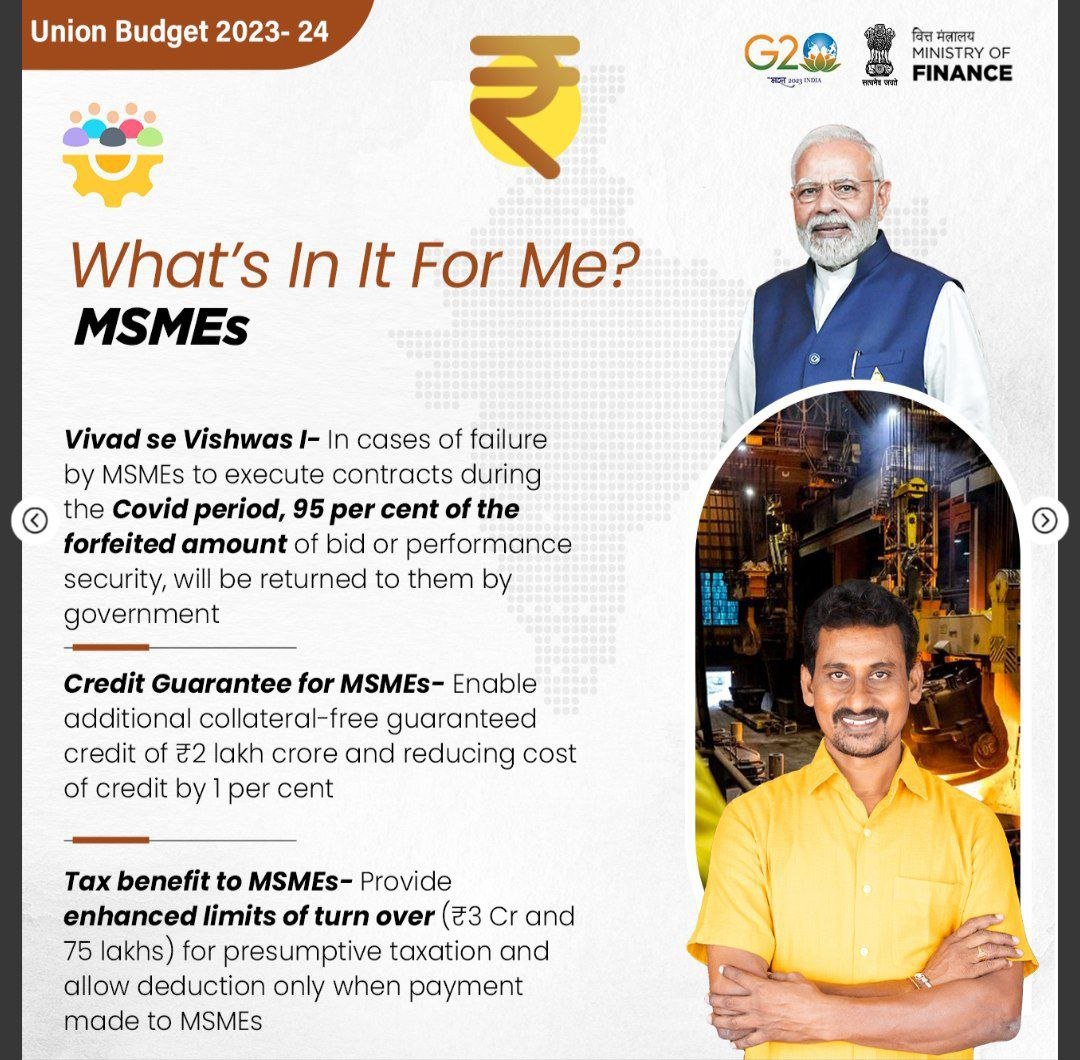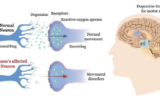
Current Affairs for UPSC Civil Services Exam – May 09, 2024
Subscribers of "Current Affairs" course can Download Daily Current Affairs in PDF/DOC
Subscribe to Never Miss an Important Update! Assured Discounts on New Products!
Must Join PMF IAS Telegram Channel & PMF IAS History Telegram Channel
{GS2 – Governance – Laws} Hindu marriage invalid without Customary Rituals **
- Context (TOI I IE): The SC has ruled that adherence to prescribed rituals under the Hindu Marriage Act is essential for the validity of the marriage, even after registration.
- The couple’s marriage was registered under the Hindu Marriage Act, 1955 (HMA), even before they performed the wedding rituals.
S.C’s Observations
- Section 7 of the Act lists ‘ceremonies of a Hindu marriage’, which must be complied with for the marriage to be valid. If this is not done, the marriage is not deemed valid in the eye of the law.
- Where a Hindu marriage is not performed in accordance with the applicable rites or ceremonies, such as ‘saptapadi,’ it will not be construed as a Hindu marriage.
- Hindu marriage is a ‘samskara’ and a sacrament that has to be accorded its status as an institution of great value in Indian society.
- A marriage is not a commercial transaction. It is a significant event marking the beginning of a marital bond between a man and a woman, forming the foundation of a family, the fundamental unit of Indian society.
- The Hindu Marriage Act has categorically discarded polyandry, polygamy, and all other such types of relations.
|
What is a Solemnised Marriage?
- Solemnising a marriage refers to the performance of an official marriage ceremony with appropriate rituals.
- Marriage in India is primarily governed by a gamut of personal laws and the Special Marriage Act of 1954 (SMA).
- Personal laws are essentially practices ordained by religion. Each religion has its own set of ‘requirements’ for marriage — a marriage is ‘valid’ when these requirements are met.
- For instance, for Hindus (and Christians), marriage is a sacrament, i.e., a religious bond. Rituals such as kanyadaan, panigrahana, saptapadi, or other local customs solemnise a Hindu marriage.
- For Christians, a ceremony in the Church based on local customs is regarded as a valid marriage.
- Under Muslim law, however, marriage is essentially a contractual obligation.
- A valid marriage requires the consent of both parties in writing and the presence of witnesses.
- In practice, this includes both parties giving vocal consent and signing a nikahnama (Islamic marriage contract) in the presence of witnesses and a Qazi.
What are Registered Marriages?
- Commonly used terms like ‘court marriage’ or ‘registered marriage’ refer to a non-religious or civil marriage under the SMA, a secular law.
- A marriage ‘performed’ under this law is essentially a solemnisation in ‘court’ (a registrar’s office) without any rituals.
- A marriage without any rituals is only valid under the SMA.
- Registration of a marriage, after it is solemnised as per rituals, is different from a registered marriage.
What is the Registration of Marriages?
- Section 8 of the HMA gives powers to the state to register marriages solemnised as per the requirements of Section 7.
- The Indian Christian Marriage Act of 1872 governs Christian marriages, and Muslims use a nikahnama issued by a Qazi to establish marriage terms; despite lacking statutory status, it’s widely adopted.
- Separately, several states, including Assam and Jammu & Kashmir, have their laws for the registration of Muslim marriages and divorce, although their application is scarce.
Laws related to the Registration of Marriages
- Entry 5 and Entry 30 of the Concurrent List in the IC’s Seventh Schedule, jointly or separately, deal with marriage registration.
- The Births, Deaths and Marriages Registration Act of 1886 does not have a robust application to marriage, unlike the effort to record births and deaths.
- States have their laws, and in some states, like Karnataka and Delhi, marriage registration is mandatory.
|
What if a Marriage is not Registered?
- A certificate of marriage registration is helpful for various official purposes where either spouse needs to declare that they are married, such as applying for a spousal visa or joint medical insurance.
- However, not registering a marriage cannot be the sole ground for declaring it invalid since registering a marriage itself does not make it valid.
- A ‘valid’ marriage as per rituals might be vital in determining who is a rightful spouse when there are claims by multiple cohabiting partners.
- These aspects become crucial in bigamy trials and inheritance suits.
|
Proof/Evidence of a Marriage
- A marriage certificate has corroborative value but is not conclusive evidence of marital validity; in contested cases, it alone is insufficient evidence.
- An exception to this is a certificate under the SMA, which is “conclusive” proof of marriage.
- Proof of valid marriage rituals (e.g., photos, witnesses) and long-term cohabitation recognised by family, friends, or children serves as evidence of a valid marriage.
|
- In Muslim and Christian marriages, registration takes place almost immediately after solemnisation with witnesses present, which makes it more reliable as evidence.
- In a Hindu wedding, the priest performing the ceremony does not routinely certify the marriage.
- In law, there exists a general presumption of marriage when a man and woman have cohabited continuously, even if there is no direct evidence of marriage.
- Section 114 of the Indian Evidence Act allows the Court to presume facts based on everyday natural events, human behaviour, and public and private affairs in relation to the case.
{GS2 – IR – India-Nepal} India-Nepal Border Dispute **
- Context (IE): Nepal’s cabinet decided to put a map on its Rs 100 currency note showing certain areas administered by India in Uttarakhand as part of its territory.
India-Nepal Border
Credit: Maps of India
|
History of India-Nepal Border Dispute
- Nepal surrendered a part of its western territory with the Treaty of Sugauli, signed between the British East India Company and Nepal in 1816, at the end of the Anglo-Nepalese War of 1814-16 after its forces were defeated by the British East India Company.
- The subsequent Sugauli treaty defined the origin of the Kali River as Nepal’s border point with India. The dispute is mainly due to the varying interpretations of the river’s origin and its various tributaries that cut through the mountains.
- The maps issued by the British Surveyor General of India in 1819, 1821, 1827, and 1856 showed the Kali River as originating in Limpiadhura.
- In 1920-21, Kali was shown as a stream originating from a temple site and joining the main stream about a kilometre downstream.
- However, the last map issued by the British before they left India in 1947 showed the initial position of the Kali River originating in Limpiadhura.
- The villages in this area were covered by the Nepal government census until 1962, and the people paid land revenue to the government in Kathmandu. However, the situation changed after the Indo-China War of 1962.

Credit: BBC
Differing views on the source of Kali River
Nepal’s Claim
- Nepal shows the Kali River about 16 kilometers northwest of Kalapani at Limpiyadhura in the Zanskar range of the Himalayas. Thus, the entire stretch starting from Limpiyadhura, including Kalapani and Lipulekh, belongs to Nepal.
Kalapani area
Lipulekh
|
India’s Claim
- India argues that the River Kali originated from a smaller rivulet named Pankhagad, lying on the southern portion of Kalapani, and the subsequent ridge on the eastern part of this area is the true border, therefore making the territory part of India.
Learn in detail about India-Nepal Relations.
{GS2 – Polity – IC – Elections} Role of Election Commission if the Normal Polling Process is Disrupted *
- Context (IE): EC, under Sections 58(2) and 58A(2) of the Representation of People Act, 1951 (RPA), declared the polls void in some polling stations in Manipur and Arunachal Pradesh.
- India’s election laws provide a framework for handling situations where the normal polling process is disrupted for any reason, which includes
- Damage to EVMs,
- Booth-capturing,
- Natural disasters or
- A candidate’s death.
- The provisions for repolls, adjournments, and poll voiding ensure that the democratic process remains fair, transparent, and uninterrupted.
Intentional destruction, taking away of EVMs
- Under Section 58 of the RPA (Fresh poll in the case of destruction, etc., of ballot boxes), the EC can declare the poll at a polling station to be void if:
- An unauthorised person has unlawfully taken away any EVM;
- Any EVM has been accidentally or intentionally destroyed, lost, damaged, or tampered with, or
- A mechanical failure develops in any EVM during the recording of votes.
Booth Capturing
- Booth-capturing, defined in Section135A of the RPA, includes all or any of the following activities by any person or persons:
- Seizure of a polling station, affecting the conduct of elections;
- Taking possession of a polling station, allowing only his or their supporters to vote;
- Intimidating or threatening any elector and preventing him from going to the polling station;
- Seizure of a counting place affecting the counting of votes;
- Involvement of any person in government service in any of the above activities.
- Under Section 58A, if booth capturing occurs, the presiding officer closes the EVM control unit and detaches the ballot unit(s) as per Rule 49X.
- The EC, based on the material facts, may
- Declare the poll at that polling station to be void and direct fresh polls on a new date or
- Countermand the election in the constituency in case booth capturing has taken place in a large number of polling stations.
Natural disasters, other disruptions to polling
- The Presiding Officer of a polling station can adjourn the poll at a polling station under Section 57(1) of the Representation of the People Act, 1951, in case of:
- A natural calamity like a flood, a severe storm;
- Non-receipt or loss or damage to essential polling materials like EVM, electoral roll etc;
- Interruption or obstruction due to any riot or open violence;
- Non-arrival of the polling party due to obstruction or any other severe difficulty or
- The poll did not commence within two hours of the scheduled time due to a malfunctioning EVM or any other reason.
- After seeking the EC’s approval on the date and hours, the adjourned poll will resume at the stage it was at immediately before the adjournment.
Death of a Candidate
- As per Section 52 of RPA, amended in 1996, the poll shall be adjourned only in case of the death of a recognised political party’s candidate.
- The above provision applies if the candidate with a valid nomination dies at any time after 11.00 a.m. on the last date for making nominations until the commencement of the poll.
- The RO reports this fact to the EC and orders the poll to be adjourned to a date to be notified later by the Commission.
- The political party must make the nomination within seven days.
- However, if the candidate dies after voting, a by-election will be held if he emerges as the seat’s winner after counting.
|
{GS2 – Social Sector – Health – Issues} Need to Improve Food Safety Regulation
- Context (IE): Food safety issues in recent weeks have raised serious doubts about the ability of the Food Safety and Standards Authority of India (FSSAI) to ensure the safety of food sold in the country.
Food safety issues in recent weeks
- Popular brands like MDH and Everest faced rejection in Hong Kong, Singapore, and the United States due to the presence of carcinogen ethylene oxide and salmonella bacteria.
- Despite WHO’s recommendation, Nestle reportedly sold Cerelac with added sugar in India.
- The WHO recommends avoiding added sugar in food products for children under three years old.
- The FSS (Foods for Infant Nutrition Regulations) prefer lactose and glucose polymers as carbohydrates for infant food. Sucrose or fructose should only be added if necessary and should not exceed 20% of total carbohydrates.
Concerns
- Only after a public debate on Bournvita’s high sugar content did the food regulator recently ask e-commerce companies to remove drinks like Bournvita and Horlicks from the list of “health” drinks.
- FSSAI should have mandated a reduction in fat, sugar, and salt in processed foods long ago. Instead, in 2018, FSSAI opted for a voluntary pledge from manufacturers.
- The FSS (Packaging and Labelling) Regulations 2011 did not mandate food manufacturers to include sodium content under “Nutrition Information,” despite the direct link between sodium and health issues like hypertension and diabetes.
- The Public Account Committee’s report in December 2022 highlighted the low priority given to food safety by state governments.
- For example, in Bihar, only 14 of the 115 required Food Safety Officers were employed, leading to low sampling and poor conviction rates.
- In the case of the Centre for Public Interest Litigation vs. Union of India (2020), the SC stated that any hazardous or injurious food article threatens the fundamental right to life guaranteed under Article 21 of the Constitution of India.
What needs to be done?
- Various government bodies, such as the Comptroller & Auditor General, Parliamentary Standing Committee, and Public Accounts Committee, have emphasised the need for quick formulation and updates of food standards and regulations.
- They suggest considering international standards and new scientific research with wider stakeholder consultation.
- There is a need for a more transparent licensing, inspection, sampling, & market surveillance system.
{GS3 – Envi – Conservation} Tackling the Issues with Rainwater Harvesting **
- Context (DTE): Despite mandating rainwater harvesting (RWH) in all three mega-cities (Delhi, Bengaluru, Chennai) implementation struggles persist. This has led these cities towards Day Zero.
Measures taken to Install rainwater harvesting systems in the three mega-cities
- Bengaluru has mandated rainwater harvesting in residential colonies since 2010.
- In 2021, the Bangalore Water Supply and Sewerage Board (BWSSB) made it mandatory for buildings on sites measuring 60×40 feet and more.
- Chennai Metropolitan Development Authority (CMDA) mandated rainwater harvesting system designs in building plans since 2002.
- Delhi Jal Board (DJB) enforced RWH systems since 2012, with penalties for non-compliance and financial incentives for adhering to regulations.
- DJB offers financial assistance up to Rs 50,000 and a 10% water bill rebate for residents with adequacy certificates for their rainwater harvesting systems.
Challenges in implementing rainwater harvesting systems
- Communities are losing interest due to a lack of space and high installation costs.
- Weak enforcement and insufficient monitoring.
- Inadequate awareness and support for maintenance.
- Insufficient measures to prevent sewage contamination.
What needs to be done?
- Focus on community-level rainwater harvesting due to limited land availability for household RWH.
- Provide technical assistance and raise awareness about rainwater harvesting.
- Rejuvenating traditional rain harvesting structures like lakes, ponds, and temple tanks.
- Stringent guidelines for rainwater harvesting installation and maintenance, including piezometers for groundwater monitoring (National Green Tribunal Committee).
- City water authorities should conduct regular monitoring of structures and their impact.
- Implement both incentives and penalties to encourage communities to build effective RWH systems.
Sponge Cities
How can cities become ‘sponge cities’?
|
{GS3 – IE – Exports} Non-market Economies *
- Context (IE): Vietnam has urged the U.S. to change its classification from non-market economy to market economy.
- Despite being a key trading partner with the US and helping to limit China’s influence in the area, Vietnam has remained classified as a non-market economy by the U.S. for more than two decades.
- The U.S. categorises countries as non-market economies or market economies using several criteria.
|
Criteria followed
- Currency convertibility.
- Wage determination through free bargaining between labour and management.
- Allowance of joint ventures or other foreign investment.
- Whether the state owns the means of production.
- Whether the State controls the allocation of resources, pricing, and output decisions.
- Consideration of human rights factors.
Reason for classifying the economies
- Non-market economy status allows the US to impose anti-dumping duties on imports.
- Dumping occurs when a country sells exports below domestic prices. Anti-dumping duties compensate for price differences between imported goods and their normal value.
- The US calculates production costs for goods from a non-market economy, like Vietnam, based on the value in the third country, not on the company’s actual costs.
Why does Vietnam want to get the ‘market economy’ status?
- Vietnam wants to attain the status of a market economy to avoid high taxes imposed by the US. It would eliminate anti-dumping duties on Vietnamese products in the US market.
- They argue that Vietnam meets several criteria for being classified as a market economy. For example,
- They allow foreign investment and have wage negotiations between workers and management.
- The state does not own most means of production.
Obstacles faced by Vietnam
- US steelmakers and the American Shrimp Processors Association oppose the change. They cite Vietnam’s land ownership restrictions, weak labour laws, and lower shrimp duties as reasons.
- Members of Congress are also against the change, fearing it would benefit Chinese state firms. They believe it would allow these firms to bypass US tariffs more easily.
{Prelims – Awards} Pulitzer Prize
- Context (HT): The Pulitzer Prize for 2023 was awarded recently.
- The Pulitzers honoured the best in journalism from 2023 in 15 categories, as well as eight arts categories focused on books, music and theatre.
- For the first time, the Pulitzers opened eligibility to broadcast and audio companies that also operate digital news sites, such as CNN, NPR, and the broadcast networks ABC, CBS, and NBC. However, the work must be primarily in digital journalism.
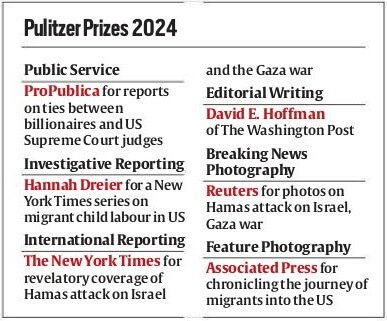
Credit: IE
- The Pulitzer is announced by America’s Columbia University and bestowed on the recommendation of the Pulitzer Prize Board.
- In addition to honouring winners and finalists in 15 journalism categories, the Pulitzer Board recognises distinguished work in areas such as books, music, and theatre.
- The prizes were established in the will of newspaper publisher Joseph Pulitzer and first awarded in 1917.
- The public service winner receives a gold medal. All other winners receive $15,000.
- A member of the Ghadar Party in America, Indian-American journalist Gobind Behari Lal was the first from India to win the Pulitzer Prize for journalism in 1937.
{Prelims – Envi – Species} Needlefish
- Context (TH): Researchers at the Central Marine Fisheries Research Institute (CMFRI) have Scientifically described two new species of needlefish from Indian waters.
About Needlefish

Credit: Florida Museum
- Primarily marine fishes found throughout temperate and tropical waters.
- They are silvery fish with blue or green backs.
- Carnivorous in habit. They Feed on other small fish, crustaceans and cephalopods.
- These fishes are found abundantly along the Indian coast and are pelagic resources.
- Pelagic zone is the open sea or ocean that is not near the coast.
{Prelims – In News} Global Electricity Review 2024
- Context (TH | IE | TOI): Recently, the Global Electricity Review 2024 was published by the global energy think tank Ember.
Findings of the report
- In 2023, solar energy achieved a milestone as it contributed 5.5 percent to global production and India alone generated 5.8 percent of its electricity from solar energy.
- In 2023, India saw the fourth-largest increase in solar generation, behind China, the United States, and Brazil. Together, the top four solar growth countries accounted for 75% of growth in 2023.
- In terms of installed power capacity, which includes sources of renewable and non-renewable energy, India, at 73 gigawatts (1 GW is one billion watts) ranks fifth in the world while Japan is in third place.
- Solar’s contribution to electricity generation in India increased from 0.5% in 2015 to 5.8% in 2023.
- Global solar generation in 2023 was more than six times larger than in 2015, while in India, it was 17 times higher.
- Globally, renewable sources of energy produced 30% of global electricity. Renewables expanded from 19% of global electricity in 2000, driven by an increase in solar and wind power, to 30% in 2023.
{Prelims – Sci – Bio – Diseases} West Nile Virus *
- Context (TH): The Kerala government on May 7 issued an alert in the State against West Nile fever.
- The West Nile Virus is a mosquito-borne, single-stranded RNA virus. It is a flavivirus related to the viruses that cause Japanese encephalitis and yellow fever.
- It was first isolated in a woman in the West Nile district of Uganda in 1937.
- It is commonly found in Africa, Europe, the Middle East, North America and West Asia.
Transmission
- Culex species of mosquitoes act as the principal vectors for transmission.
- The virus is transmitted by infected mosquitoes between and among humans and animals, including birds, which are the reservoir hosts of the virus.
- It can spread through blood transfusion, from an infected mother to her child, or through exposure to the virus in laboratories. It is not known to spread by contact with infected humans or animals.
- To date, no human-to-human transmission of WNV through casual contact has been documented.

Credit: IE
Symptoms
- The disease is asymptomatic in 80% of the infected people.
- In 20% of cases, symptoms include high fever, headache, neck stiffness, disorientation, stupor, coma, tremors, muscle weakness, and paralysis. Most symptoms are similar to those of Japanese encephalitis.
- Severe infection can lead to neuroinvasive diseases such as West Nile encephalitis or meningitis, West Nile poliomyelitis, or acute flaccid paralysis.
Treatment
- There is no vaccine to prevent WNV infection.





![PMF IAS Environment for UPSC 2022-23 [paperback] PMF IAS [Nov 30, 2021]…](https://pmfias.b-cdn.net/wp-content/uploads/2024/04/pmfiasenvironmentforupsc2022-23paperbackpmfiasnov302021.jpg)



